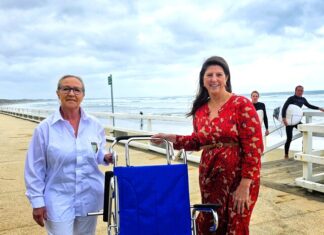By JOHN VAN KLAVEREN
THE VALUE of tourism fell $92 million in the Great Ocean Road region during 2012/2013, according to new figures.
The region’s tourism employment fell 6.5 per cent, or 1300, over the same period, according to the State Tourism Satellite Accounts.
But Geelong and Bellarine tourism boss Roger Grant said the falls were confined to the western end of the region.
Latest figures for the Geelong sub-region showed increases in domestic overnight visitors and tourism market share, he said.
The disparities between Geelong and the western end of the Great Ocean Road supported establishment of a defined local tourism region in its own right, Mr Grant said.
Geelong was included with the Great Ocean Road when the previous state government redrew boundaries for tourism regions.
But Geelong and the Bellarine Peninsula decided to go it alone instead of joining a new mega tourism board, losing access to state funding as a result.
New Tourism Minister and Lara MP John Eren is reconsidering the arrangement.
Mr Grant said Victorian tourism was in a three-speed economy, with Melbourne “going gangbusters” and neighbouring regions recording growth.
“The challenge is for the outlying regions, such as along the Murray, east Gippsland, and the western end of the Great Ocean Rd. They reason they’re not performing as well is due to the changing nature of tourism.
“More Victorians are heading overseas but those taking domestic short breaks are not travelling as far, they’re staying closer to Melbourne.”
Mr Grant said the figures should be used only to identify trends over a period of time.
“We don’t rely totally on that information because it’s a bit like looking in the rear vision mirror and tourism is always subject to external variations like the exchange rate and visitation patterns.”
The State Tourism Satellite Accounts said the industry contributed about $1.7 billion to the Great Ocean Road economy, employing around 18,600. Tourism in Geelong was worth about $302 million and 4700 jobs.
The Great Ocean Road region ranked fourth compared to other Victorian tourism regions based on direct share of the regional economy.
But the region supplied a significant amount of the state-wide direct contribution of tourism, ranking second behind Melbourne.







